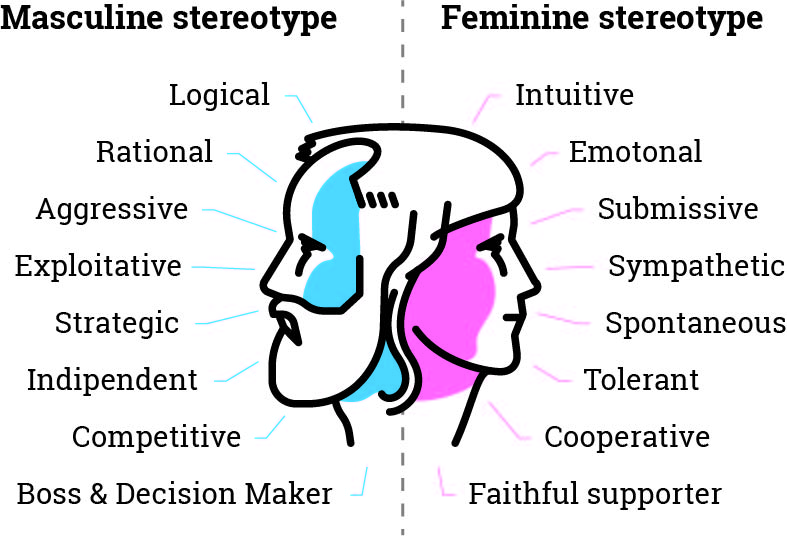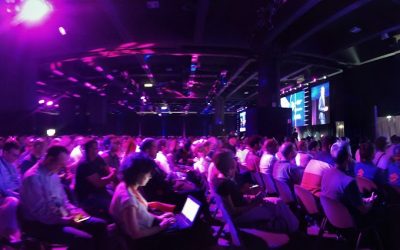I had just recently started my career in the HR world when my ex-boss, after a somehow quite difficult day with the rest of my colleagues told me: “I do work well with you. When we are at odds I feel as if I am talking to a man”. I didn’t really give too much importance to this sentence at the very beginning. I was actually so happy about this expression of trust that I didn’t pay attention to his words. I was thinking: “He has finally acknowledged my merit and my potential without any gender bias. I am on the right path”.
Too good to be true? QED Gareth Morgan
So, the years go by, many of them until I stumble across an amazing and provocative reading about nature and the way organisations work. The book is called Images of Organization by Gareth Morgan and it is a very interesting managerial text described by Yvonna Lincoln from Vanderbilt University as a text that opens new windows to look at the world.
The author opens one of such windows on the typical gender stereotypes which, even in the 21st century, is still influencing the organisational life and people’s behaviours.
I started reading these few lines and I’ve immediately thought about the compliment my ex-boss gave me almost 15 years ago. And I am no longer that happy.
Let’s go straight to the point
Morgan argues two key points:
- Many organisations are dominated by sexist values which “infect” the organisational life in favour of one sex or the other.
- The man-woman relationships are often subjected to stereotypes and prejudiced images on how the two sexes should actually behave.
Here is an example by Morgan

scheme from: Images of Organization, G. Morgan, SAGE Publications ed.
These stereotypes create distortions which will influence – or worse – condition our daily behaviours in the organisations.
What does it really mean to be influenced by stereotypes in the organization life?
It simply means that the values of most companies are the most common features of male stereotypes. The business is conceived as a rational, analytical, strategical, decision-oriented, hard and, sometimes aggressive entity. Exactly how men are supposed to be.
And what about those women who want to grow, become managers and reach the most important roles within the organisation? How many times did you actually hear a colleague of yours called a “careerist” only because she was working hard to let her fantastic qualities shine towards management?
And let’s not forget “radio boys”, the most efficient method to divulge subtle disapproval, sometimes quite cruelly.
Trying not to deep dive into the banality of clichés, the persistence of gender stereotypes within organisations makes everyone (and not just HRs) face different perceptions of the same organisational situation according to our sex. According to Morgan, this “creates a vast number of problems which make interactions among men and women very complicated”.
Ok, this was bad news… Good news is…
The “sexual balance” is rapidly changing in many organisations since governments of the most industrialised countries are actively taking into consideration equal opportunities.
From the economic, organisational, and enterprise level, the arrival of the Agile mindset as a culture and value-related system is bringing, also in the HR domain, a massive change.
3 things to do:
- Abandon the hierarchical structure for a flat or reticular one instead.
Many of the organisational structures are still very hierarchical today. This translates into a very scarce communication and collaboration among teams/offices/departments with most of the decisions agreed by the above structure and in an atmosphere of control and command.
A flat organizational chart represents a network of opportunities for the experience exchange and for people to grow, regardless of their gender. This is the great environment for different managerial styles based on collaboration values, listening, empathy and dialogue to grow. In a network-based world, abilities and new competencies are needed. And the features of the feminine archetype do offer interesting things. - Gradually built consensus
Sometimes you need some courage to communicate the vision. You need to be blunt to unite forces, energies, resources (even when sometimes they are all contrasting each other) and this can happen with gender diversity. Without identification, without a common passion, it is impossible to feel the force within us that makes us go beyond stereotypes. Inclusion, participation, cooperation, equality and focus on the solution are the most important aspects, not the faults and the culprits. The decisional process which starts consensus needs a discussion that involves everyone. It is not a debate between enemies: all parties then need to be on a common level. - Activate your intuition
It is important to trust your intuitions to make an inconvenient situation come to an end – a situation such as gender stereotypes. Be very careful with the bias which bewilders intuition. When we have to make a decision and our intuition is telling us: “This person is influenced by typical stereotypes” we need to stop and ponder to understand if our thoughts are biased and in which percentage. We need to look back at our past experiences to understand if they are influencing the way in which we are seeing the person: this is the ultimate key to be successful and not biased.
Accept and overcome your fears
Everything and everyone get instantly busy within a firm. There are tasks, responsibilities, things to do, problems that need to be solved. The fight with time distracts us, all the things we have to do are a sweet anesthetic against apprehension but fear remains and it always demands an answer.
C’è chi reagisce con la fuga, e chi con l’accettazione costruttiva. Accettare la paura per ciò che è significa guardare alla realtà andando oltre gli stereotipi, compresi quelli di genere. Significa mutare il senso della vita organizzativa superando le resistenze interne. D’altro canto è necessario allenarsi visto che il presente è all’insegna del cambiamento ed è importante conviverci facendo del nostro meglio.
Some of us run away and some of us react with constructive acceptance. Accepting fear for what it really is, means to look at reality with no stereotypes, including gender bias. Overcoming internal resistances allows to change the meaning of the organisational life. Training is fundamental as the time we live in is constantly changing and we need to learn to live in it at our best.
You might also like:
HR Life: resistance to the changes
T-E-A-M: Together Everyone Achieves More
Agile Culture… what does it mean to be Agile?



